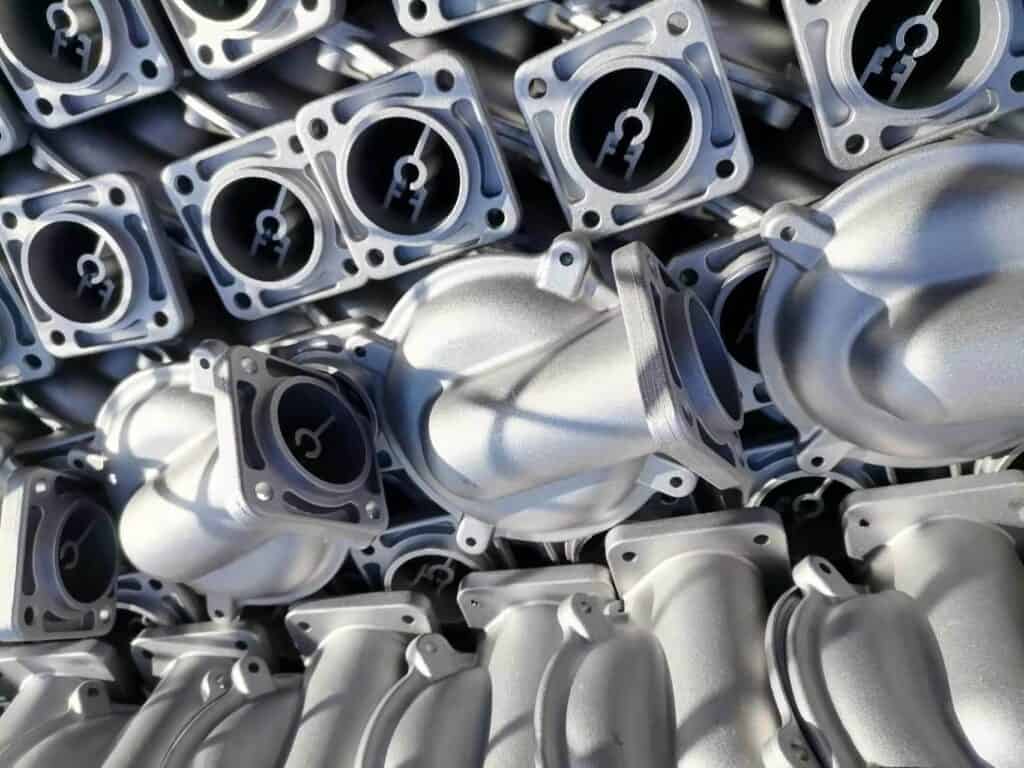Today we released the influence on alloy elements, and then we will take out the others on aluminum alloy. If your customers are uncertain about the choice of materials, we can provide professional material recommendations.

Copper element- Cu
When the temperature of aluminum alloy drops to 302 degrees, the solubility of copper is 0.45%. Copper is an alloying element and has a solid solution strengthening effect. In addition, the CuAl2 precipitated by aging has an aging effect. The copper content in the aluminum alloy is usually 2.5% to 5%, and the strengthening effects are the best when the copper content is 4% to 6.8%. So the copper content of most hard aluminum alloys is in this range.
The aluminum-copper alloy can contain litter elements such as silicon, magnesium, manganese, chromium, zinc, iron, etc.
Silicon element-Si
Although solubility decreases of Aluminum-silicon alloys with decreasing temperature, these alloys are generally not heat-treatable. They have excellent casting properties and corrosion resistance.
If magnesium and silicon are added to aluminum to form an aluminum-magnesium-silicon alloy, the strengthening phase is MgSi. The mass ratio of magnesium to silicon is 1.73:1. When designing the Al-Mg-Si alloy composition, the content of magnesium&silicon arranged on the substrate according to this ratio. In some Al-Mg-Si alloys, to improve the strength, an appropriate amount of copper is added, and the appropriate amount of chromium is added to offset the adverse effect of copper on corrosion resistance.
In the deformed aluminum alloy, the addition of silicon to aluminum is only a welding material, and the addition of silicon to aluminum also has a strengthening effect.
Magnesium-Mg
The content of magnesium in most industrial wrought aluminum alloys is less than 6%. The silicon content is also low, and these alloys cannot be heat-treated to strengthen, but they have good weldability, corrosion resistance, and moderate strength.
The strengthening of magnesium to aluminum is obvious. For every 1% increase in magnesium, the tensile strength increases by about 34MPa. The strengthening effect may supplement if less than 1% manganese adding. Therefore, adding manganese can reduce the magnesium content and the tendency for hot cracking. In addition, manganese can make the Mg5Al8 compound precipitate uniformly and improve the corrosion resistance and welding performance.
Manganese-Mn
The strength of the alloy increases continuously with the increasing solubility, and the elongation reaches the maximum value when the manganese content is 0.8%. Al-Mn alloy is a non-age hardening alloy. That is, it cannot strengthen by heat treatment.
Manganese can prevent the recrystallization process of aluminum alloys and increase the recrystallization temperature. The function of MnAl6 is to dissolve impurity iron, form (Fe, Mn) Al6, and reduce the harmful effects of iron.
Zinc element-Zn
When zinc adds to aluminum alone, the improvement of the strength of the aluminum alloy under the deformation condition is limited, and there is a tendency of stress corrosion cracking and stress corrosion cracking, thus limiting its application.
Adding zinc and magnesium to aluminum forms a strengthening phase Mg/Zn2. When the content of magnesium exceeds the superhard aluminum alloy required to form the Mg/Zn2 phase, when the ratio of zinc and magnesium is controlled at about 2.7, the stress corrosion cracking resistance is the largest.
For example, adding a copper element based on Al-Zn-Mg forms an Al-Zn-Mg-Cu alloy. It is also an essential aluminum alloy in the aerospace, aviation, and electric power industry.
